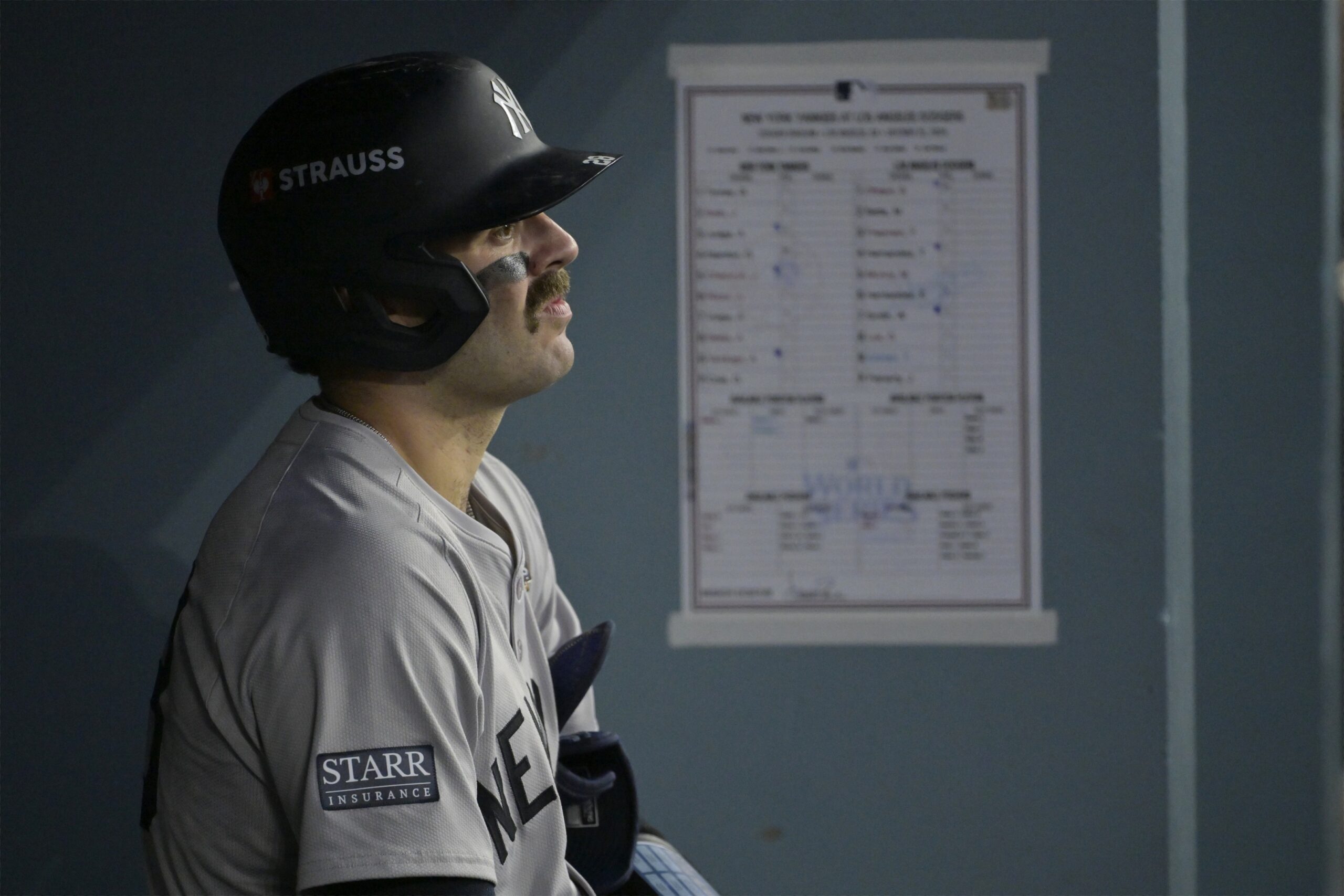Austin Wells of the New York Yankees has enjoyed a solid rookie campaign overall. He will likely end up finishing in the top 3 of the American League Rookie of the Year race. However, he mightily struggled at the end of the regular season, which has continued well into the postseason. Wells is slashing a brutal .105/.171/.184 (0 wRC+) striking out over 40% of the time in the postseason. His emergence as an above-average bat during the regular season served as a big boost for the Yankees lineup. But now, his offensive woes are part of a theme this postseason with the lack of offensive production from catchers.
Austin Wells’ Prolonged Slump Coming at Worst Time for Yankees
Lack Of Thump From Catchers
Handling an entire pitching staff and understanding the advanced scouting reports on the opposing team’s hitters are obviously key elements of the catcher position. On top of this, catchers must prepare accordingly as a hitter. Given the premium defensive value of catchers, lesser offensive production from them can be understandable. Furthermore, offense tends to decline overall in the postseason, as the best pitchers on the best teams are getting the bulk of the work. However, catchers produce far below even the lesser level overall in the postseason.
Overall postseason: offense down 14%
Catchers in the postseason: offense down 38%(Last 10 postseasons, wRC+ from @fangraphs) https://t.co/h92YQqfTiy
— Eno Sarris (@enosarris) October 18, 2024
Catchers are consistently hitting around 10% worse than the league average for a number of years. MLB teams are willing to concede a bit of offensive production at a few defense-first positions. Traditionally, these positions are all up the middle: center field, shortstop, and catcher. Shortstop has undergone a revolution with the influx of talent over the last decade or so. For catcher and center field, however, offensive production has been hard to come by. Yes, offensive production has been down league-wide for the past few years as pitching has dominated. But center field has had its lowest OBP values all occur within the last decade as teams look to become younger and more athletic at the position.
The rise in bullpen games in recent years could also be a contributing factor to this. Teams are wary of not wanting to use a bullpen game too early in a playoff series to risk a reliever seeing a hitter for the third time. This can mirror a similar effect that a starting pitcher experiences in a start. Ultimately, catchers are tasked with even heavier preparations in the postseason, and outlining plans for each individual reliever can be taxing. Wells has been outstanding behind the plate, tying for the sixth most Defensive Runs Saved at the position. He rates as one of the best framers in baseball and well above average as a blocker.
Disciplined Approach
Early in the season, it was evident when watching Austin Wells that he had good awareness and control of the strike zone. He was able to maintain this discipline in addition to striking out less than average. In the first half of the regular season, he was one of 16 players to walk more than 11% of the time with a better-than-average strikeout rate. The average OPS of the group was .829, but Wells lagged behind at a .687 OPS mark.
Wells was excelling at many of the process stats and doing serviceably with the quality of contact, but the results were not there yet. Following the All-Star break, he went on an extended heater with a .949 OPS until the end of August. He maintained his disciplined approach and barreled up the ball more frequently. This came during a crucial stretch when slugger Giancarlo Stanton was injured. Wells spent much of this time behind Aaron Judge in the cleanup position, and he hit nearly half of his season home run total from the four-hole.
As the calendar turned to September, however, Wells went ice cold. It is not as if his strikeout rate just spiked up and can explain away all of his struggles. It was only at 23.9%, but his BABIP cratered to a dismal .161. Perhaps it can be chalked up as an unlucky month and he could shake it off heading into October. Not quite.
October Obstacle
The strikeout rate was not the issue during September’s skid, but it has been a huge factor in October. Wells’ strikeout rate is over 40% for the month, which is completely untenable. While contact has come far more sparingly, Wells is at least maximizing the contact that is made, showing better hard-hit numbers than in the regular season. He’s just simply not being rewarded for them with an even more dismal .150 BABIP. Here are some of his regular season numbers compared to the postseason:
| Regular Season | Postseason | |
| BB% | 11.4% | 7.3% |
| K% | 21.0% | 41.5% |
| Whiff% | 27.3% | 35.0% |
| Barrel% | 9.1% | 9.5% |
| Hard Hit% | 38.9% | 42.9% |
| xwOBA | .341 | .220 |
These sorts of things can happen to a young hitter in his first taste of the postseason. Was it also mentioned that he is a rookie catcher? It has been a frustrating stretch for Austin Wells, but his offensive woes should not take away from the work he has done with the pitching staff throughout the postseason. While it has been a difficult two months, there will be better days ahead for the AL Rookie of the Year hopeful.
Photo Credit: © Jayne Kamin-Oncea-Imagn Images






